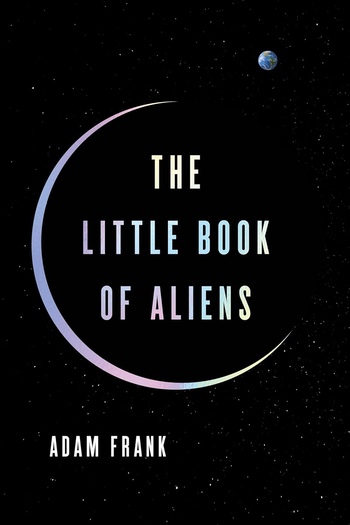Review: The Little Book of Aliensby Jeff Foust
|
| “What’s needed is hard data from verified instruments collected via a rational search strategy.” |
Most scientists involved in conventional astrobiology or even technosignatures tend to steer clear of UAPs, despite the recent interest by the US government. However, Adam Frank, an astrophysicist at the University of Rochester, is willing to consider them as part of the broader search for life beyond Earth, including them in his latest book, The Little Book of Aliens. It showcases his willingness to consider all lines of inquiry when it comes to extraterrestrial life, while subjecting them to scientific scrutiny.
UAPs, to be clear, make up only a modest part of a slender book (true to its title, The Little Book of Aliens weighs in at about 200 pages.) Frank manages to provide a broad overview of astrobiology in those pages, touching on the history of the search for both biosignatures and technosignatures, including familiar topics like the Drake Equation and Fermi Paradox, as well as analysis of how similar, or different, alien life might be to terrestrial life, and whether we could communicate with it should we find it.
Frank turns his attention to that third strand of searching for life beyond Earth in a chapter titled, “WTF UFOs and UAPs?” It’s a broad examination of the UFO phenomenon over the decades; he notes that earlier surges of interest in UFOs adversely affected scientific searches, as politicians used it to deny NASA funding for SETI efforts in the 1970s into the 1990s. He is skeptical of the more recent evidence that now falls under the UAP term, but supports efforts to gain better data about them: “What’s needed is hard data from verified instruments collected via a rational search strategy.” (Italics in original.) NASA, in its own report on UAPs completed after this book went to press, also endorsed “a comprehensive, evidence-based approach that is rooted in the scientific method,” while also emphasizing that none of the data that an independent panel reviewed linked UAPs to anything extraterrestrial in nature.
The current interest in UAPs may fade, particularly if the evidence fails to find a definite extraterrestrial (or even terrestrial) explanation for them. But, unlike past surges in interest in UFOs, there’s little to suggest it will have an adverse effect on more traditional astrobiological studies as more data comes in from our solar system and beyond, analyzed and scrutinized by scientists. The truth may be out there, just buried below the icy surfaces of Enceladus and Europa or in the atmosphere of an exoplanet.
Note: we are using a new commenting system, which may require you to create a new account.
